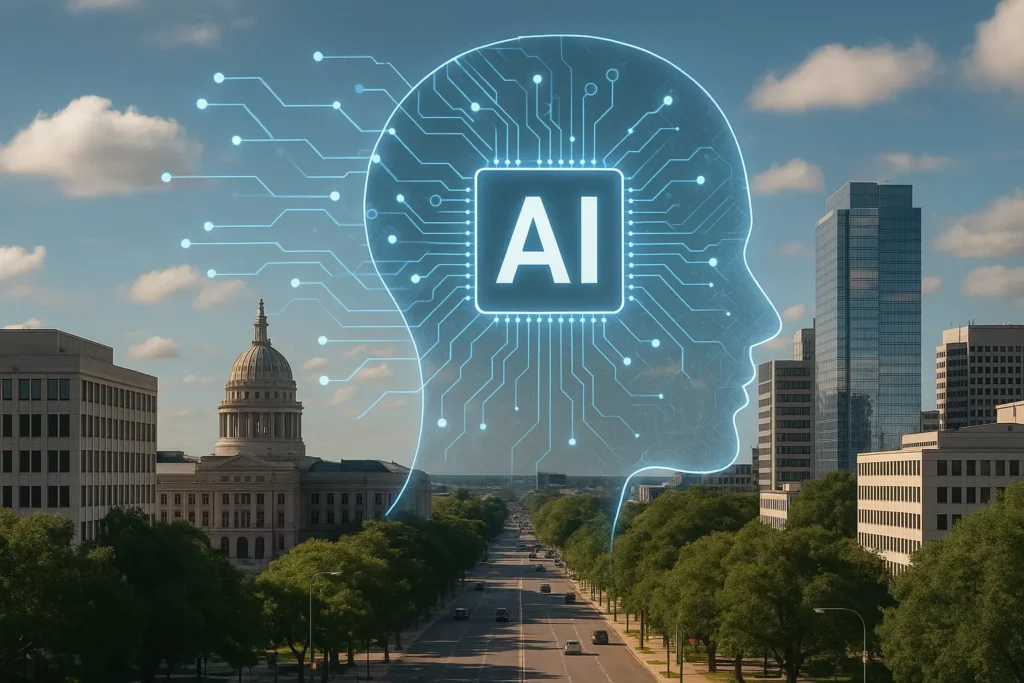India’s governance is undergoing a profound transformation powered by Artificial Intelligence (AI). From resolving citizen complaints faster to ensuring subsidies reach the rightful beneficiaries, AI-driven solutions are streamlining public service delivery like never before.
By leveraging machine learning (ML), natural language processing (NLP), predictive analytics, and computer vision, governments at the national level are making public systems:
- Transparent – automated processes reduce opacity.
- Efficient – routine tasks are completed faster.
- Responsive – data-driven insights support real-time decisions.
- Inclusive – multilingual and user-friendly interfaces reach more citizens.
This blog explores how AI is transforming public service delivery in three core areas at the national level: grievance redressal, welfare distribution, and resource allocation.
AI-Powered Grievance Redressal: From Complaints to Confidence
Resolving grievances effectively is central to building trust. Traditionally, complaints were delayed, duplicated, or lost in bureaucratic silos. AI has changed this landscape.
How AI works in grievance systems:
- Classification & Prioritization → NLP and ML classify grievances by urgency, topic, or sentiment.
- Duplicate Filtering → Similar complaints are clustered, saving time.
- Trend Detection → Dashboards highlight systemic pain points for proactive action.
- 24/7 Chatbots → Citizens can lodge and track grievances in their language, anytime.
The impact:
- Faster resolution → Average timelines reduced dramatically.
- Transparency → Citizens can track status in real time.
- Accountability → Data analytics highlight recurring issues or corruption patterns.
- Inclusivity → Conversational AI enables Hindi, Tamil, Bengali, and more.
AI has transformed grievance platforms into responsive, data-driven ecosystems, turning each resolved complaint into proof that governance is working for citizens.
Smarter Welfare Distribution with AI
India’s welfare programs cover hundreds of millions—from pensions to scholarships to health insurance. Ensuring benefits reach the right hands is critical, and AI is making it possible.
Key AI applications in welfare delivery:
- Identity Verification → ML and computer vision authenticate beneficiaries, reducing fraud.
- Fraud Detection → Predictive analytics flag unusual claims in real time.
- Citizen Support → AI chatbots provide instant query resolution in multiple Indian languages.
- Personalized Delivery → Data insights help tailor schemes to vulnerable groups.
Examples of outcomes:
- DBT (Direct Benefit Transfer) → Strengthened by AI verification, minimizing leakages.
- Healthcare claims → AI anomaly detection identifies suspicious patterns, saving public funds.
- Interactive platforms → Chatbots empower beneficiaries with real-time updates and transparency.
With AI as a watchdog and enabler, welfare systems are becoming faster, fairer, and more accountable. Citizens experience less paperwork, fewer delays, and more dignity in accessing entitlements.
AI in Resource Allocation and Ration Distribution
Beyond individual entitlements, AI is reshaping system-level governance—how resources like food, electricity, and health services are managed.
Applications of AI in national resource management:
- Supply Chain Optimization → Algorithms calculate optimal transport routes for food distribution, reducing costs and emissions.
- Energy Demand Forecasting → ML predicts electricity consumption, balancing supply and preventing outages.
- Predictive Maintenance → Sensors + AI forecast failures in infrastructure, reducing downtime.
- Healthcare Resources → NLP-driven disease surveillance detects outbreaks early, guiding resource deployment.
Benefits delivered:
- Efficiency → Reduced wastage and duplication in supply chains.
- Agility → Real-time forecasts enable proactive planning during emergencies.
- Reliability → Predictive maintenance improves uptime of critical infrastructure.
- Resilience → Early detection of disease or shortages prevents crises.
AI turns governance from reactive problem-solving into proactive, anticipatory planning, making resources available where and when they are needed most.
Building Transparency, Efficiency, and Trust
Across grievance systems, welfare distribution, and resource allocation, AI delivers three critical advantages:
- Transparency → Automated processes reduce scope for manipulation.
- Efficiency → Services are delivered faster, reducing delays.
- Inclusivity → Multilingual AI platforms ensure accessibility for diverse citizens.
- Personalization → Data-driven insights tailor government services to specific needs.
Together, these qualities strengthen the foundation of citizen trust in governance.
The Road Ahead: Responsible and Inclusive AI
The promise of AI in governance is immense, but so are the challenges.
Key considerations going forward:
- Data Privacy → Citizens must have confidence their data is safe.
- Algorithmic Fairness → Systems must be free from bias to avoid wrongful exclusions.
- Human Oversight → AI should assist, not replace, human judgment and empathy.
- Inclusivity → AI tools must support multiple languages, voice-based access, and low-bandwidth environments.
India’s future governance models will rely on responsible AI frameworks, fairness audits, and inclusive design principles.
VisionAI India’s Capability in Public Service Delivery
The examples of AI in grievance systems, welfare distribution, and resource allocation illustrate how technology can make governance faster, fairer, and more accountable. To scale these innovations, India will need institutions that combine policy expertise, technological capability, and implementation experience.
VisionAI India—born from VisionIAS’s 15+ year legacy in education, research, and national program delivery—has the capability to contribute to this transformation.
Its strengths lie in:
- AI-Powered Citizen Platforms → Building chatbots and intelligent systems that can improve grievance redressal and citizen engagement at scale.
- Data Analytics & Dashboards → Designing real-time monitoring tools that support transparency in welfare delivery and optimize allocation of resources.
- Programmatic Support → Advising and assisting in the deployment of AI-driven systems that strengthen inclusivity and trust in governance.
Through these capabilities, VisionAI India can serve as a strategic contributor to India’s journey of embedding AI into public service delivery—helping ensure that technology amplifies both efficiency and citizen trust
Conclusion
AI is no longer experimental in Indian governance—it is a core enabler of public service delivery.
- Grievance redressal is quicker, more transparent, and more accountable.
- Welfare distribution is leak-proof, citizen-friendly, and fraud-resistant.
- Resource allocation is smarter, proactive, and resilient.
By embedding AI into governance systems, India is building toward real-time, citizen-centric service delivery.
When technology aligns with transparency and trust, public service delivery becomes more than administration—it becomes a true partnership between state and citizen, driving efficiency, fairness, and equity at scale.

